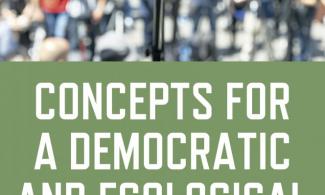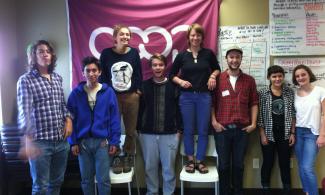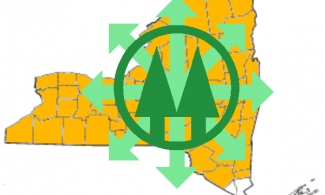
Yavor Tarinski’s Concepts for a Democratic and Ecological Society challenges your mind on the most significant questions such as direct democracy, de-growth, solidarity economy, and libertarian municipalism.
Yavor Tarinski positions democracy against hierarchies that span from gerontocracy to patriarchal perspectives. Then, he links this concept to the anti-globalization movement from Seattle in 1999, through the World Social Forum of Porto Alegre, the Occupy Wall Street in New York, the Indignados of Madrid and Barcelona, the Nuit Debout in Paris in the following years, and the more recent Yellow Vests of France.
Tarinski analyses the rebel city movement in the context of municipalism and direct democracy experiences. He takes us on a journey starting from the ancient Athenian polis which is considered to be the birthplace of democracy but was not inclusive of slaves, women, and the poor. We are then shown how democracy has evolved in Italian cities in the Middle Ages between the ninth and fifteenth centuries, and how the French Commune in 1871 contributed to the principles of democratic politics – a significant event during which Paris became a public space through neighborhood assemblies.
Although Tarinski tries to balance his research with a reference section from a gender perspective, the revolutionary French women’s struggle is not included. Their obvious demand is ignored in history. For instance, on October 5, 1789 the Women’s March on Versailles was not only for requisition of bread’s fair price. A social history study underline that the:
…march to Versailles was an extension of the long-accepted role of ordinary women in eighteenth-century Paris. The nature of women’s paid and unpaid work, of female religious observance, and of the individual and collective identity that these created, gave women a key role in defending the local community. This led them to act politically well before the Revolution. Their action in October 1789 was consistent with patterns of behavior shaped by everyday life in the city. Yet the scale of the action and its city-wide character were quite unlike anything that had happened before. In this, the lesson of July 1789 was important, but so were long-term changes in Paris. The city was becoming more integrated, both economically and administratively, and this gave working women a new relationship to urban space.1
Direct democracy is especially analyzed in depth. For example, it is emphasized that the Agora meetings within the public space discussed ideas and exchanged skills in a similar manner to an example from the near past – the Occupy movement, which began in New York in 2012 and spread all over the world. It came to show for yet another time that, unlike statecraft that is predisposed to bureaucratic centralization and hierarchy, cities tend to empower local populaces, creating citizens actively involved in public affairs.
Disadvantaged and marginalized groups of people such as the LGBTQIA+, BIPOC, migrant and refugee communities, and many others that are being oppressed, become visible when their voices are heard during direct democracy practices. Social ecologists view the local level of neighborhood assemblies as the basis of the organizational model of democratic confederalism and it is logically interlinked with the strategy of libertarian municipalism. A version of it is currently being built in the Middle East in Rojava, northern Syria, and as the Zapatista movement in southern Mexico.
Regarding urbanization without ecological principles, most mega-cities today are urban sprawls. The megacity is a real problem because of their continuous economic growth. The private, gated communities of these urban sprawls and their so-called smart cities paradigm leave no space for human connection. On the other hand, migrants and refugees are faced with an increasing urban militarization across the globe: as we saw in the city of Portland, USA, prior to the election of Trump, during the Gezi movement in Istanbul, Turkey, and in Barcelona, Spain as well.
On the topic of Commons as Paradigm Beyond State and Markets, Tarinski includes Elinor Ostrom’s work from 1988, which responds to the Tragedy of the Commons. Ostrom discovered how local communities share irrigation, fisheries, and farmlands equally in the US, Guatemala, Turkey, Nepal, India, and elsewhere. However, exhaustion of commons is a possibility when there is no continuous community dynamic.
The narrative of constant economic growth, another topic analyzed by Tarinski, is based on a continuously growing consumerist society. It results in an economism of which determinism is one of the main pillars. Economic determinism is based on the idea that it can be predicted what direction humanity will take in the future. It presents the economy as the most complex non-understandable organizational structure in a capitalist society and under state socialism, while it’s structured in a quite hierarchical manner.
Whereas the solidarity economy, Tarinski argues, is an alternative that breaks with this deterministic logic, it allows people to express and meet their needs through creativity, by building from today new forms of production, consumption, and social relationships based on fundamentally different core principles such as direct democracy, trust, solidarity, and dignity. Much like the practices introduced by the Zapatistas and Rojava’s Kurdish democratic communities, solidarity economies became a vision, especially after the 2008 economic crises. In this realm one encounters workers and consumer cooperatives, time banks, social currencies, and housing co-ops. Activist Cheyenna Weber, co-founder of SolidarityNYC, describes such cooperative practices by suggesting that: “we focus on racial and social justice and by stewarding the commons we are encouraging people to move money from corporate investment to justice such as community land trust, farmland, etc.”2
In his examination of what a just ecological society might look like, Tarinski not only criticizes the consumerist capitalist system, but also underlines the inconsistencies and problematics of authoritarian state socialism, which is missing from most political texts. In short, this is a necessary revolutionary work which should be in your library to make you think more in depth about your future, about utopias, and ultimately about the perspectives of a democratic and ecological society.
- 1David Garrioch: “The Everyday Lives of Parisian Women and the 1789 French Revolution” in Social History, Vol. 24, No. 3 (Taylor & Francis, Ltd., 1999), pp. 231-249 (available online at https://www.jstor.org/stable/4286577).
- 2https://www.resilience.org/stories/2017-06-07/history-future-solidarity-economy/
Citations
Emet Değirmenci (2022). Book Review: Concepts for a Democratic and Ecological Society. Grassroots Economic Organizing (GEO). https://geo.coop/articles/book-review-concepts-democratic-and-ecological-society





Add new comment